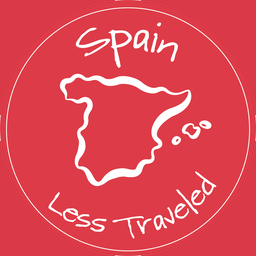Patios in Spain - An architectural approach for travelers
Originally published May 5, 2020. Updated February 25, 2025.
All images are courtesy of Carlos Casuso, unless otherwise stated.
This is part of a series celebrating the patios of Spain through virtual travel in the Travel Spain! community to coincide with one of our favorite Spanish festivals: Córdoba’s festival, la Fiesta de los Patios.
Every May, Spain Less Traveled hosts an EXCLUSIVE event, in person to celebrate the beautiful patios in Spain.
To see past events and get inspired, join the Travel Spain! community and search hashtag #TravelSpainCordobaOfficial. Travel Spain! will also be the first place we will announce our next Cordoba / la Fiesta de los Patios exclusive event, so be sure you are a member of our community for Spain travel lovers.
And of course, we would love to help plan your dream trip to Spain!
A little background: Roman Houses
According to some sources, the word ‘Patio’ (Spanish for ‘courtyard’) comes from the Latin ‘patulum’ or ‘patium’ and it makes sense, as the patios in Spain have their origin in Roman houses. The Romans occupied the Iberian peninsula for 700 years, creating big cities, with big houses for its richest citizens.
These ‘Patrician’ houses (or Domus) were organized around a courtyard with plants and fountains. This was done for two main reasons:
Sketch taken from Del Toro & Antúnez Arquitectos blog
Privacy: To reduce the number of windows to the exterior. Most rooms open to the patio giving freedom of movement and activity to the inhabitants without looks from the outside.
Temperature: It’s a perfect system for hot weather. The small windows to the exterior create a flow of air from the patio opening through the rooms. The water and greenery in the patio cools that air and the portico of the patio creates a shadow in the rooms walls, also cooling them.
The patios were also the place to display the family statues and the bigger the patio, the more important the family. There were even houses with several patios, some public, used for receiving guests and others private, for enjoyment of the family.
There are very little remains of Roman houses in Spain, but some nice reconstructions like the one close to Reinosa, in Cantabria, that can be visited.
Houses in Pompeii (Italy)
Patios in Spain: Moorish houses of the Albayzin in Granada
This model was also used in Roman houses in the north of Africa, and that’s the route that the Moors took to arrive in Spain. Their domination was a little longer than the Romans’ and it had a bigger influence on Spanish architecture. As the Quran doesn’t allow the representation of humans or animals, there were no statues, but rich decoration with vegetal or geometric motifs.
There are many examples of Moorish houses in Spain. For instance, the city of Granada has restored many of the old biggest Moorish houses of the city to their former splendor. These are great places to visit if you want to see some beautiful examples of patios in Spain.
Moorish houses of the Albayzin in Granada, Spain
Even though the Moors were expelled from Spain in the 15th century, the patio model remained, as it adapted perfectly to the local climate, especially in the center and south. You don’t see houses with patios in the north of Spain, as the climate is cold and you need to keep the heat generated by fire inside.
But in Southern Spain, particularly Andalucia, you can find patios in big Baroque palaces or small traditional houses
The model was also exported to then Spanish domains, like Latin America, where colonial houses are also organized around patios. So these types of patios in Spain can also be found outside of Spain.
Patio at a school in Merida, Mexico.
Cordoba: the most beautiful patios in Spain
But Cordoba turned the patios in Spain into works of art. Cordoba patios are not for the lovers of minimalism. They are lush, loud and a little insane. The use of greenery is taken to the extreme, and as most of them are small, plants and flowers climb the walls, invade any free space and merge with the architecture. ‘Tiestos’ (or flower pots) become architectural elements through iteration.
Patios become the living room of the house. The place to rest, to share with the family and receive and entertain visitors. And especially during the la Fiesta de los Patios they became an extension of the urban space, as everybody can go in, absorb their beauty and meet new people. Social acts like concerts of readings are organized inside them, for everybody to join. This festival is a wonderful way to see the patios in Spain on an up-close and personal level!
Examples of Cordoba Patios, the first four are private patios and the last two (bottom right and center) are Palacio de Viana, open year round. Cordoba is a great place to visit the patios in Spain!
More about Carlos
Carlos Casuso is an architect living and working in Madrid since 1991. Specialized mostly in retail design he recently created his own studio: Amanece – Design on the Rise.
Among his many projects, he designed the Rainbow Honor Walk, in San Francisco, California. It’s a set of plaques all over the city, honoring LGBTQ individuals who made a difference in the world and helped to advance the cause of rights. You can see the designs, and donate for its future expansions at www.rainbowhonorwalk.org
Casuso is also an active traveller, having visited almost 70 countries around the world. And of course, all his family comes from Cantabria. A photographer as well, all images used in this post were taken by him.
Inspired by the history and architecture of Patios in Spain?
Ready to start your journey?
Book a FREE 15 minute discovery call
to help you decide which of our professional Spain travel planning services suits you best.
















